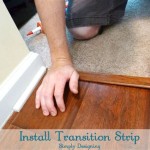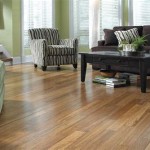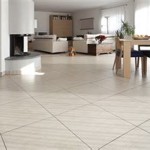Oak Real Wood Top Layer Flooring: A Comprehensive Overview
Oak real wood top layer flooring, often referred to as engineered oak flooring, represents a significant advancement in hardwood flooring technology. It offers the aesthetic appeal of solid oak with enhanced stability and versatility, making it a popular choice for a wide range of residential and commercial applications. This article will delve into the various aspects of oak real wood top layer flooring, covering its construction, advantages, installation, maintenance, and considerations for selecting the right product.
The core concept of engineered oak flooring lies in its multi-layered construction. Unlike solid hardwood, which consists of a single piece of wood, engineered flooring comprises multiple layers bonded together. The top layer, the "wear layer," is a solid piece of oak, available in various thicknesses and grades. This layer provides the visual appeal and durability expected of oak flooring. Beneath the wear layer lies a core, typically constructed from layers of plywood, high-density fiberboard (HDF), or softwood. This core is designed to provide dimensional stability, minimizing the expansion and contraction that can occur with solid hardwood due to changes in humidity and temperature.
The cross-directional construction of the core layers contributes significantly to the stability of engineered oak flooring. This arrangement counteracts the natural tendency of wood to warp or cup, making it suitable for installation in areas where solid hardwood might not be recommended, such as basements or over concrete slabs. Additionally, the multi-layered construction often makes engineered oak flooring more cost-effective than solid oak, as it utilizes wood resources more efficiently.
Understanding the Construction and Composition
The longevity and performance of oak real wood top layer flooring depend heavily on the quality and type of materials used in its construction. Each layer plays a crucial role in contributing to the overall stability and durability of the flooring.
The wear layer, being the visible surface, is the most important factor in determining the appearance and durability of the flooring. The thickness of the wear layer directly influences how many times the floor can be sanded and refinished over its lifespan. Thicker wear layers allow for more refinishing, extending the life of the floor. Oak is chosen for its hardness, grain patterns, and ability to accept stains and finishes. Different grades of oak, such as select, common, or rustic, will exhibit varying levels of knots, color variations, and grain patterns, influencing the overall appearance.
The core layer is the foundation of the engineered floor. Plywood cores, particularly those constructed from multiple thin layers of wood veneer, offer excellent dimensional stability and resistance to moisture. HDF cores provide a smooth, dense surface that is less susceptible to warping or swelling. Softwood cores are sometimes used to reduce costs, but they may not offer the same level of stability as plywood or HDF. Different core materials also have varying levels of formaldehyde emissions, which is a key consideration for indoor air quality.
The bottom layer, often called the "backer," provides additional stability and helps to balance the stresses within the flooring. This layer is typically made of wood veneer or a similar material, and it helps to prevent cupping or warping.
Advantages of Oak Real Wood Top Layer Flooring
Oak real wood top layer flooring offers several advantages over solid hardwood and other flooring options. These advantages include enhanced stability, versatility, cost-effectiveness, and ease of installation, making it a compelling choice for many homeowners and builders.
Dimensional Stability: As mentioned earlier, the engineered construction provides superior dimensional stability compared to solid hardwood. This stability makes it less prone to expansion and contraction due to changes in humidity and temperature. As a result, engineered oak flooring can be installed in areas where solid hardwood is not recommended, such as basements, kitchens, and bathrooms. It can also be installed over concrete slabs, which eliminates the need for a subfloor in many cases.
Versatility: Engineered oak flooring is available in a wide range of styles, colors, and finishes. This versatility allows it to complement a variety of interior design schemes. It can be stained to match existing furniture or décor, and it can be finished with a variety of protective coatings, such as polyurethane or oil-based finishes. The availability of different plank widths and lengths further enhances the design possibilities.
Cost-Effectiveness: While the upfront cost of engineered oak flooring can vary depending on the wear layer thickness and core material, it is often more cost-effective than solid hardwood. This is because it utilizes wood resources more efficiently and requires less material to produce. The installation costs can also be lower, as engineered flooring can often be installed using a floating method, which eliminates the need for nails or glue in some cases.
Ease of Installation: Engineered oak flooring is generally easier to install than solid hardwood. Many products feature click-lock systems, which allow the planks to be easily snapped together without the need for nails or glue. This makes it a suitable option for DIY projects. Even for more complex installations, the dimensional stability of engineered flooring makes it easier to work with than solid hardwood.
Installation and Maintenance Considerations
Proper installation and maintenance are critical to ensure the longevity and performance of oak real wood top layer flooring. Following the manufacturer's instructions and implementing a regular maintenance routine will help to protect the flooring from damage and keep it looking its best for years to come.
Installation: Before installation, it is essential to acclimate the flooring to the environment in which it will be installed. This involves storing the flooring in the room for several days to allow it to adjust to the temperature and humidity levels. The subfloor must be clean, level, and dry. Any imperfections in the subfloor can telegraph through to the finished floor, so it is important to address any issues before installation begins.
There are several installation methods for engineered oak flooring, including floating, gluing, and nailing. Floating installations are the most common, as they are relatively easy and do not require the use of adhesives. Gluing involves applying adhesive to the subfloor and then pressing the flooring into place. Nailing is typically used for installations over wooden subfloors. The best installation method will depend on the type of subfloor and the manufacturer's recommendations.
Maintenance: Regular maintenance is essential to protect the flooring from scratches, dents, and water damage. Sweeping or vacuuming the floor regularly will help to remove dirt and debris that can scratch the surface. Spills should be cleaned up immediately to prevent staining or water damage. Avoid using harsh chemicals or abrasive cleaners, as these can damage the finish. Use a damp mop with a pH-neutral cleaner specifically designed for wood floors.
Avoid walking on the floor with high heels or shoes with sharp objects that could scratch the surface. Use area rugs in high-traffic areas to protect the flooring from wear and tear. Consider placing furniture pads under the legs of furniture to prevent dents and scratches. Direct sunlight can fade the flooring over time, so it is important to use window coverings to protect it from prolonged exposure.
Depending on the thickness of the wear layer, engineered oak flooring can be sanded and refinished. Refinishing can restore the floor to its original beauty and extend its lifespan. The number of times a floor can be refinished depends on the wear layer thickness. Consult a professional flooring contractor to determine if refinishing is necessary and to ensure that the work is done properly.
In summary, oak real wood top layer flooring offers a practical and aesthetically pleasing flooring solution for a variety of environments. Its multi-layered construction provides enhanced stability and versatility, while the oak wear layer offers the natural beauty and durability of solid hardwood. By understanding the construction, advantages, installation, and maintenance requirements of engineered oak flooring, informed decisions can be made to select the right product and ensure its long-lasting performance.

Goodhome Rustic Brown Oak Engineered Real Wood Top Layer Flooring 1 35m² Pack Of Diy At B Q

Goodhome Elkins Natural Oak Engineered Real Wood Top Layer Flooring 1 58m² Pack Of 7 Tradepoint

Goodhome Marcy Natural Oak Engineered Real Wood Top Layer Flooring 1 37m² Pack Of 7 Diy At B Q

Goodhome Natural Wood Effect Engineered Real Top Layer Flooring 1 21m² Pack Of 10 Tradepoint

Goodhome Hedmark Natural Oak Effect Wood Engineered Real Top Layer Flooring 0 99m² Pack Of 7 Diy At B Q

Goodhome Bishorn Natural Oak Engineered Real Wood Top Layer Flooring 2 03m² Pack Of 9 Diy At B Q

Quick Step Cadea Sepia Oak Engineered Real Wood Top Layer Flooring 0 983m² Tradepoint

Goodhome Kailas Natural Oak Real Wood Top Layer Flooring 2 05m² Set 7229

Quick Step Cadea Natural Oak Engineered Real Wood Top Layer Flooring 0 983m² Diy At B Q

Goodhome Hotham Natural Oak Engineered Real Wood Top Layer Flooring 1 35m² Pack Of Tradepoint
Related Posts








